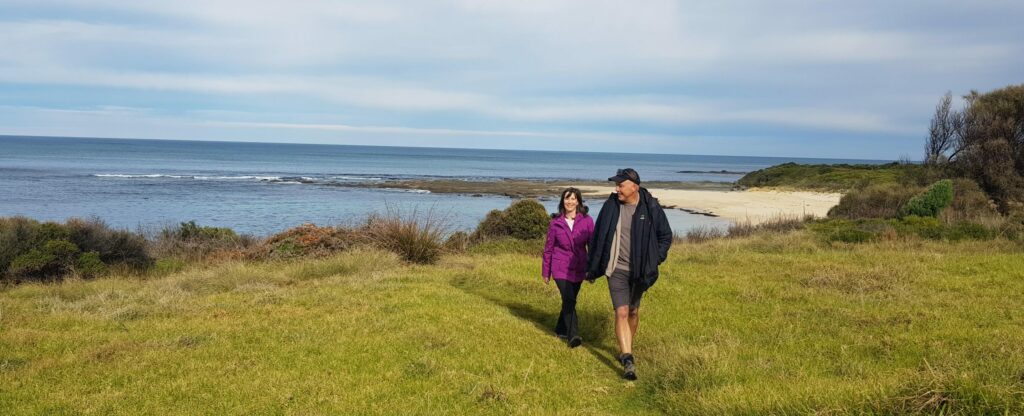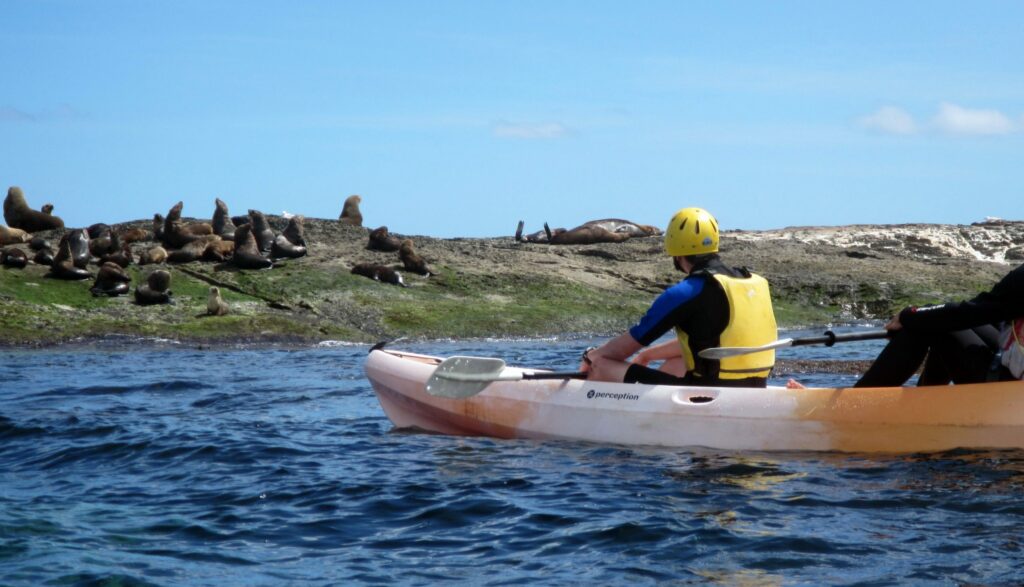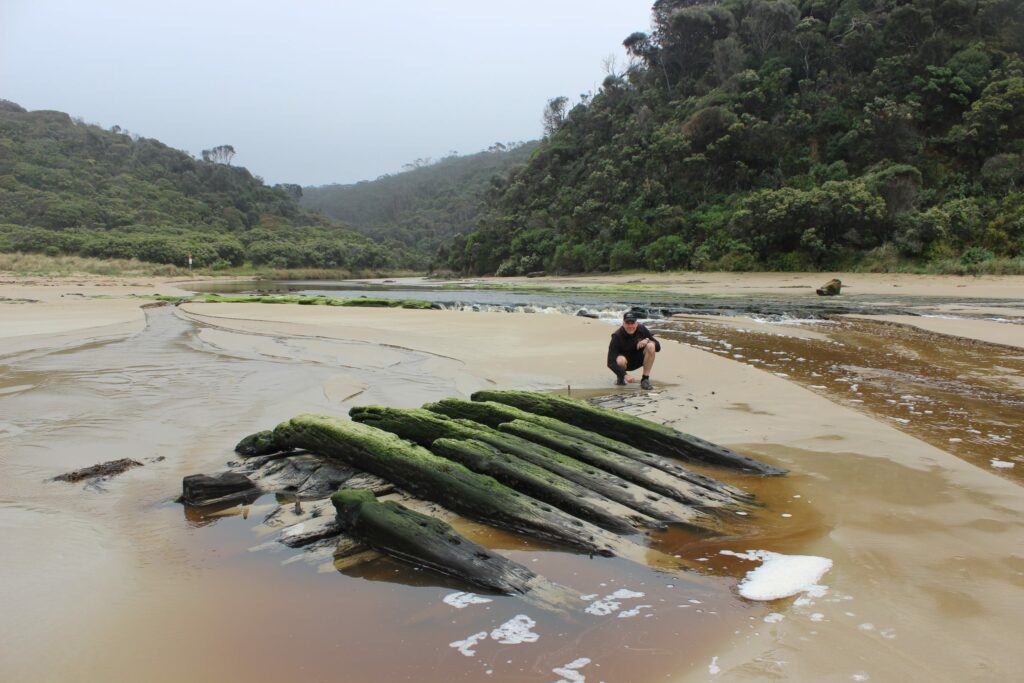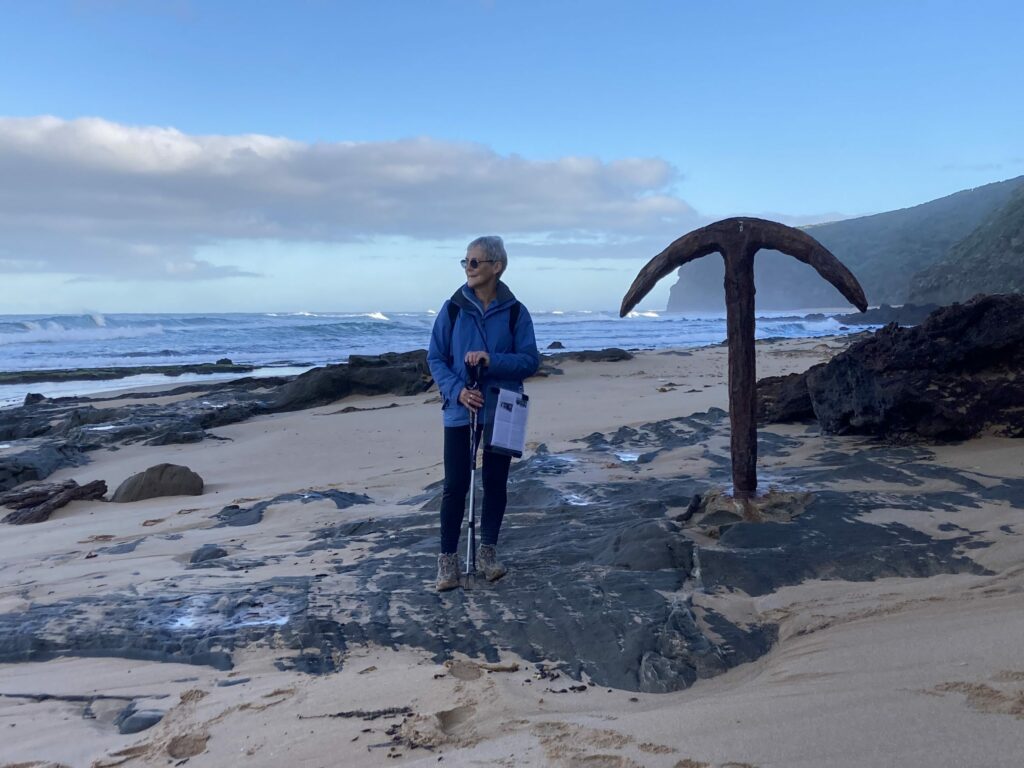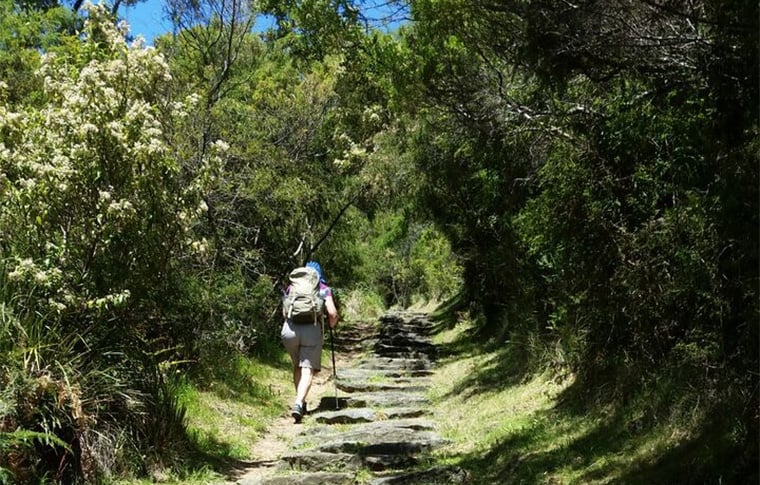Discover the difference between the Mild Side and the Wild Side of The Great Ocean Walk | Walk91

Since 2005, when the Great Ocean Walk opened, we have constantly been asked the question, “What is the difference between the Mild Side and the Wild Side of the Great Ocean Walk?” So we will do our best to answer this question for you and explain why Parks Victoria chose to use these references when building this spectacular trail.
The Mild Side of the Great Ocean Walk
When Parks Victoria first set up the Great Ocean Walk in 2005, it was the general consensus that the walk from Apollo Bay to Castle Cove was a manageable walk for anybody who dreamed of walking it, as long as they had a good level of fitness.
There are not too many steps or hills along the eastern end of the Great Ocean Walk and there are lots of ‘step on and step off points’ which make this section of the walk more accessible to walkers.
The Mild side of the Walk is approx 50kms and takes in beautiful Blanket Bay, Parker Hill, the historical Cape Otway Lighthouse, Rainbow Falls, the Aire Heritage River, and finally the magnificent Castle Cove beach and lookout platform. If you are interested in this section of track, have a look at our 3 Day Hike the Cape Walk for more information, and please feel free to contact us if you have any questions.
Highlights of the Mild Side of the Great Ocean Walk – Apollo Bay to Castle Cove
There are plenty of highlights on this section of trail, starting with the gentle walk out of Apollo Bay. It is fun to take a picture at the trailhead in Apollo Bay at the start of your adventure, before walking past the Apollo Bay harbour, on to Marengo. As you walk through the Marengo Caravan Park remember to look out over Haleys Reef, home of the Australian Fur Seals.
The first section of the trail from Apollo Bay to Shelly Beach is a great beach walk with lovely views. However, you soon turn into the rainforest and bush as you head to Elliot Ridge. Tall trees line the track and eventually lead you to Blanket Bay where a sheltered beautiful beach awaits you. (It’s a nice place to swim here – on a low tide and low swell day- if you feel like a cold water dip!)
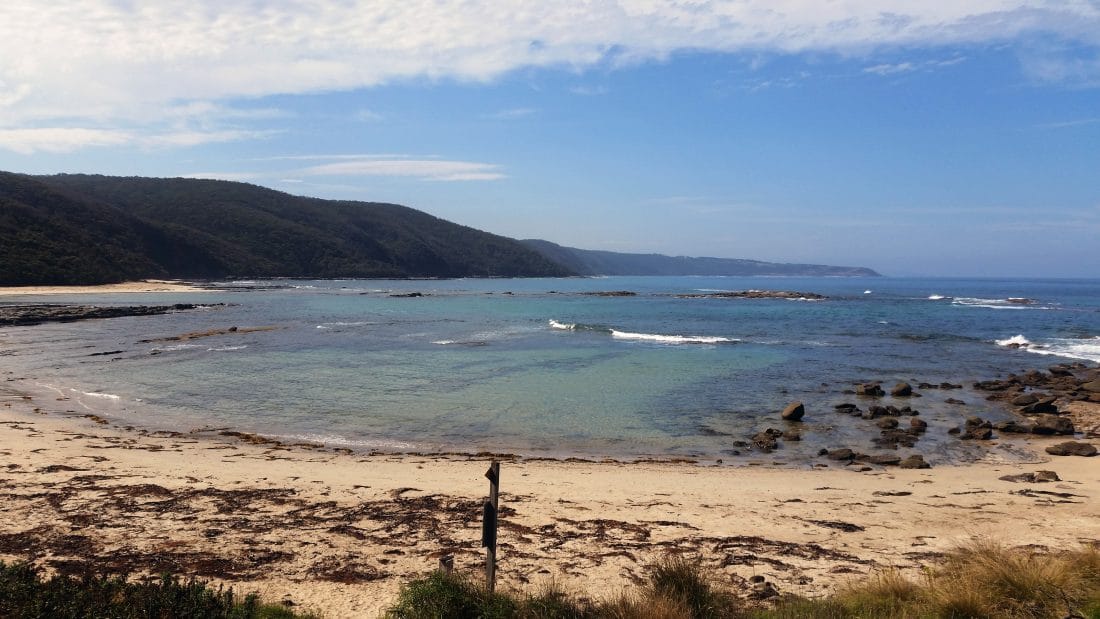
This section of trail is quite manageable but what walkers can occasionally find hard is the length of the walk. If you walk from Apollo Bay to Blanket Bay you are looking at a walk of approx 22km. So, if this distance is a bit long for you, you can split this day into two, and walk from Apollo Bay to Shelly Beach on Day 1 (approx 8km and easily doable in an afternoon), and then walk the rest of the track (approx 14km) on Day 2. For an example of this please refer to our 6 day walk, and then our 7 day walk where we have split this day up for you.
From Blanket Bay to The Cape Otway Lighthouse, the trail leads you past Parker Inlet (the resting place of Eric the Red wedged into the sand) and past Crayfish Bay (another nice place for a swim on a calm day). This section of the trail is also quite flat but there is a hill climb out of Parker Inlet.
From the Lighthouse to Aire River you will walk past the Cape Otway Cemetary which is well worth a look. It demonstrates how hard life would have been living here as a Lighthouse Keeper. You then walk on to station Beach and can drop down onto the sand and head off and explore Rainbow Falls if you feel like a detour.
After a rest at the heritage-listed Aire River (this is a nice place for a quick dip on a hot day), you can wander through the coastal heath onto Castle Cove. Stop and enjoy the magnificent views from the Look Out point. This is a popular surfing spot but not for the faint-hearted! The waves are wild here, and the sunsets are awesome!
The Wild Side of the Great Ocean Walk – Castle Cove to the 12 Apostles
The wild side of the Great Ocean Walk is exactly what it is – Wild! This section of the walk is a lot more remote with fewer car access points and less ‘step on and step off’ options. However, in return, this end of the walk is really beautiful, and sometimes you feel as though you are the only person on the whole track as you can walk for hours without seeing anyone! Not only that, you can end your walk at the iconic 12 Apostles which is also a real highlight when choosing this 58km 3 Day 12 Apostles Walk.
The Wild Side of the walk is generally considered to start at Castle Cove. But, if you want to make this day’s section a little longer you can start at the Aire River (if you have not got time to walk the whole track.) The Great Ocean Walk ends at the 12 Apostles viewing platforms and kiosk.
On the last half of the Great Ocean Walk, you get the chance to walk along the remote Milanesia Beach, see the famous gables Lookout, walk past Wreck Beach with all its shipwreck history, and on to see the huge cliffs at the bottom of Gibsons Steps. This is a great choice if you’re looking for a challenge and are quite fit.
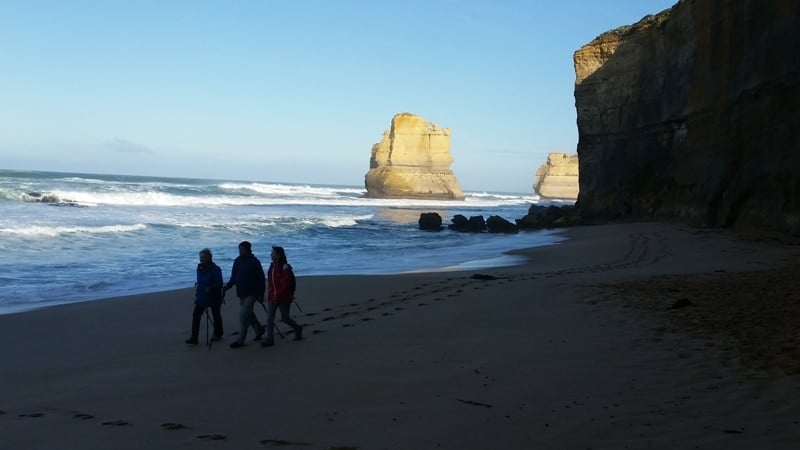
‘Step on and off’ access points on the Great Ocean Walk
Step on and off points mean that these sections can be accessed by vehicles, where Walk 91 can pick you up and shuttle you to your evening’s accommodation.
The access points between Apollo Bay and Castle Cove are as follows:
Shelly Beach, Blanket Bay, Parker Hill, Cape Otway Lighthouse, Aire River, Castle Cove.
The access points between Castle Cove and the 12 Apostles are:
Johanna Beach, Milanesia Gate, Moonlight Head, The Gables, Wreck Beach car park, Princetown, Gibsons Steps, 12 Apostles.
Is the Great Ocean Walk hard?
Taking into consideration all of the above, we would suggest that the main difficulties walkers seem to have with the Great Ocean Walk trail is:
Walking on sand – you can choose the high tide routes on most sections (but not all) which take you off the beaches and reduces beach walking.
Steps down onto Wreck Beach (optional) – there are lots of steps towards the end of the walk, but if you choose the Mild Side Walk, you will find this a lot easier.
Long distances – talk to us at Walk91 and we can custom make a walk itinerary for you based on how far you feel you can comfortably walk.
River crossing & tides – you need to check these before you leave, but remember, if you book a walk with us at Walk91 we will brief you before you start walking and explain how the decision points work, and where to consider the tides and the swell.
The best thing to do regarding managing all of the above is not only planning but training before you arrive. This will make your trip much more enjoyable and help you avoid injury once you start walking. But, if you do get here and find that once you get going you can’t walk quite as far as you have planned, we can shorten the distances where possible for you. (Remember however that you need to reach a step on and off point so we can come and pick you up.)
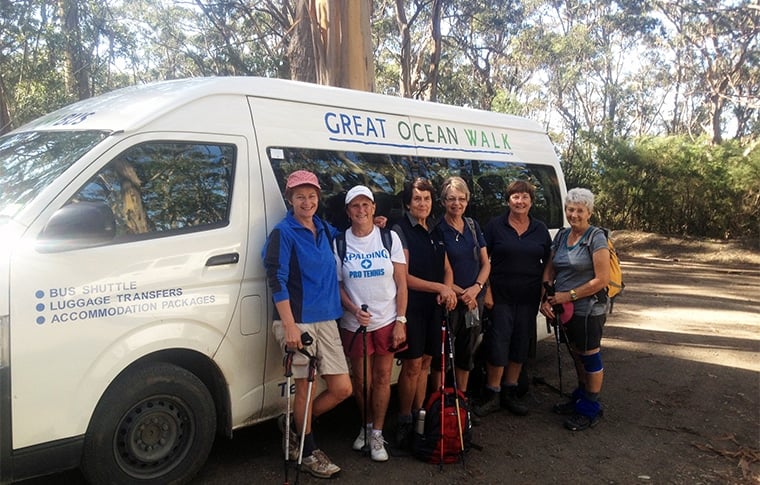
Which one should I choose? The Wild Side or the Mild Side?
If you are short on time and you just can’t decide which end of walk to do – don’t fret. You can either opt to walk our 3 Day Hike the Cape, our 4 Day Wild Side Walk, or the 3 Day 12 Apostles Walk.
So, you can always come and walk the first three days (and get a good idea of your fitness level and how you coped with the distances), and then come back later and do the last 3 days. We love welcoming back our walkers a second time!
And remember, you don’t have to be an experienced walker. There are no rock scrambles or scary cliff edge walking tracks. The tracks are well marked and most follow sandy paths or boardwalks so that they are easy to navigate.
Great Ocean Walk Walking gradings
If you are planning your own walk the Great Ocean Walk Map has more info on the trail gradings which you may find useful or you can read more about the Great Ocean Walk gradings here.
We hope this has helped you understand the difference between sections of the trail. If you have any questions please feel free to contact us. We will be happy to discuss with you which option would suit you and your group best 🙂
